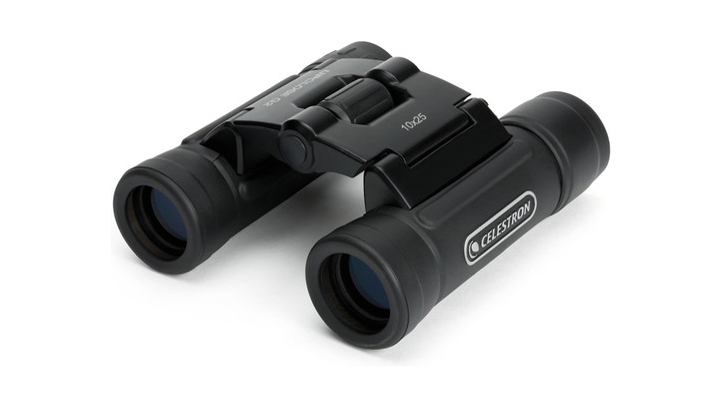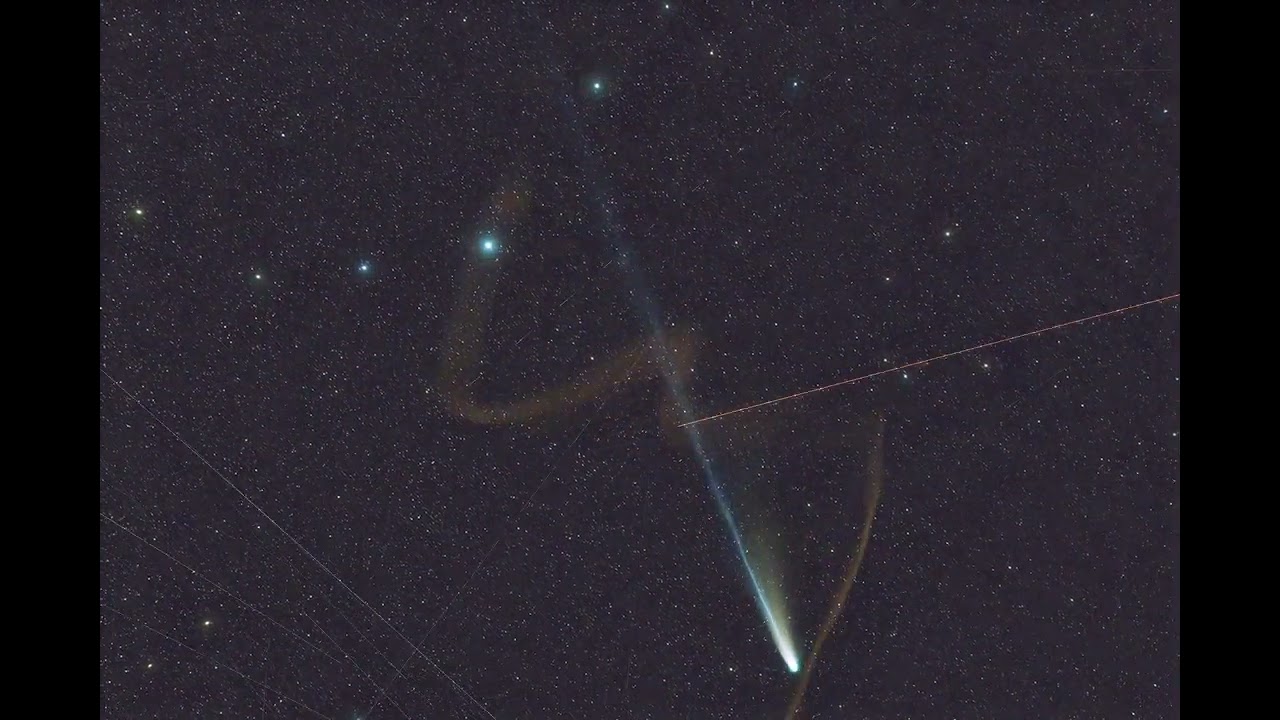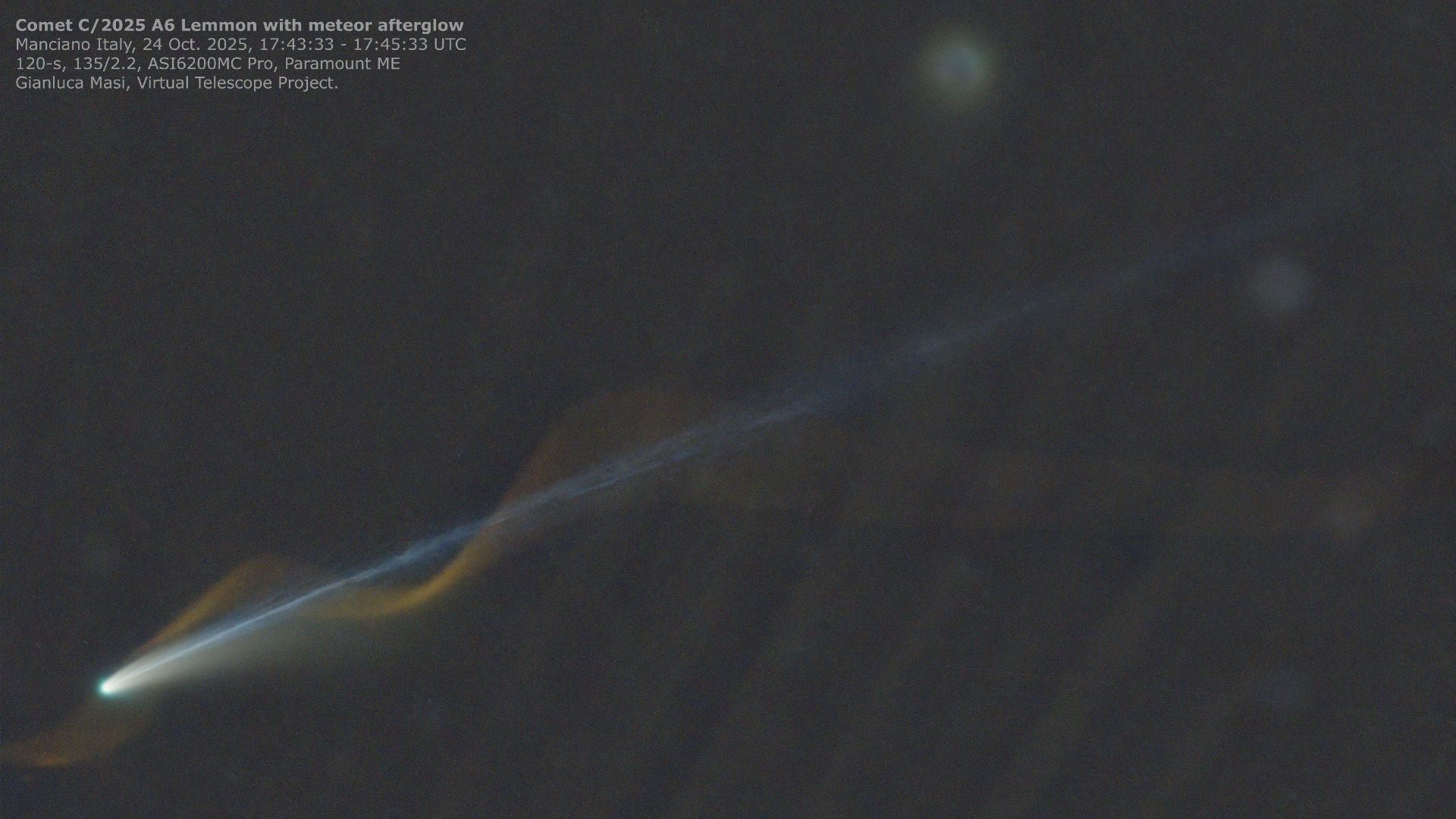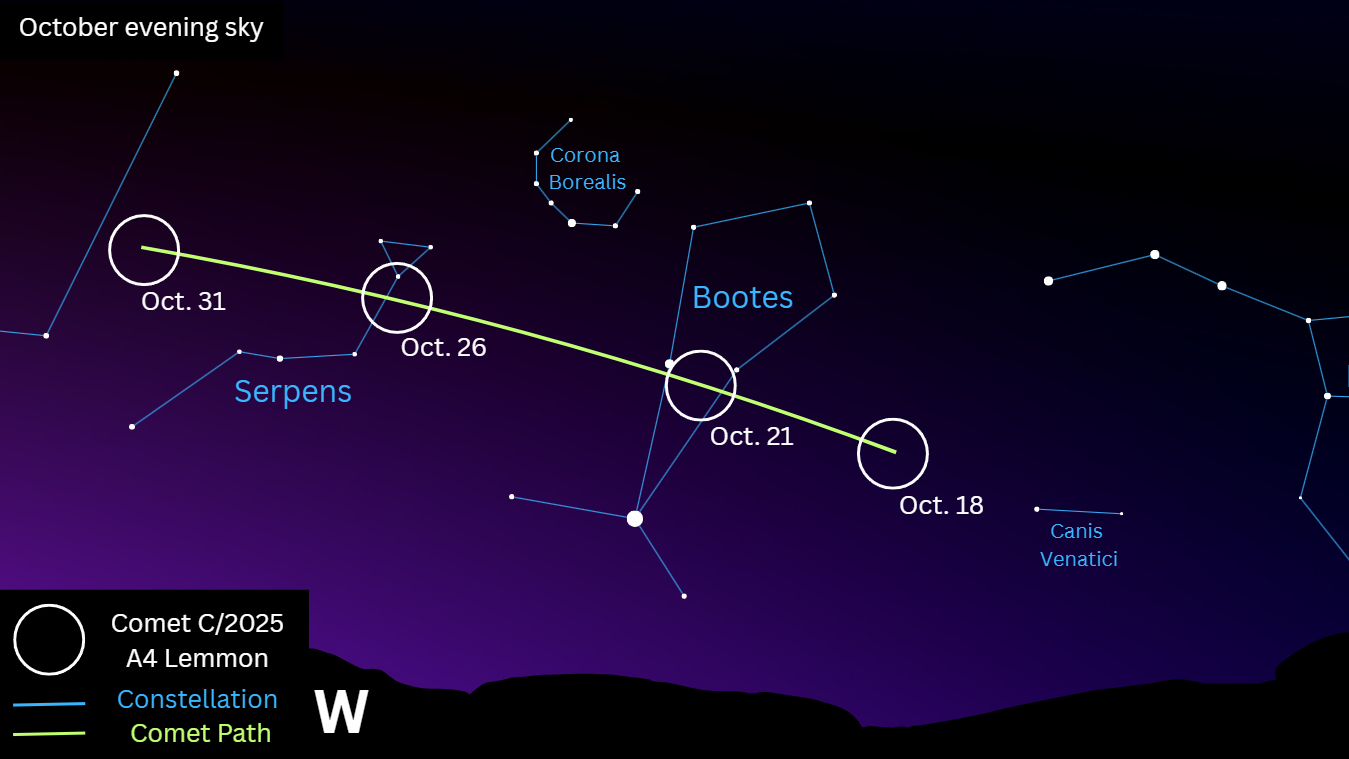Astronomer Gianluca Masi captured spectacular footage of a glowing meteor trail wrapping around the colossal tail of Comet Lemmon on Oct. 24, as the wandering solar system body approached the constellation Serpens Caput in Earth’s sky.
Masi’s image caught the stream of ionized gas left in the meteor’s wake as it rapidly expanded and rose in the upper atmosphere to create a visually spectacular wave effect, which appeared to wrap around Comet Lemmon’s tail from our Earthly perspective. A subtle fan-like pattern can also be seen rippling across the image, created as wayward light struck the camera sensor.
Celestron UpClose G2 10×50

The 10X magnification and sub $50 price tag of the Celestron UpClose G2 10×50 binoculars make them a great, affordable option for stargazers hoping to get a closer look at Comet Lemmon and SWAN as they glow in Earth’s sky.
“The phenomenon is associated with the ionization of molecular oxygen in the atmosphere caused by the meteor event, followed by its recombination, which produces the emission of light at that wavelength,” Masi wrote on the Virtual Telescope Project’s website.
Under certain conditions, these glowing trails can appear to form spirals in the upper atmosphere. But despite how intertwined the two appear in the photo, Masi writes, the coiling afterglow of the meteor is actually quite far from the tail of Comet Lemmon. “In this photograph, the meteor’s afterglow appears to coil around the comet’s ion tail — a pure perspective miracle, since the former is an atmospheric effect induced by the meteor, while the comet itself was about 100 million kilometers away.”
Masi also released a spectacular timelapse of the event captured between 1:37 p.m. (17:37 GMT) to 2:12 p.m. (18:12 GMT) on Oct. 24 showing the meteor’s ion trail twisting around Comet Lemmon as satellites left streaking trails through the image frames.

Comet Lemmon has brightened dramatically since its discovery in January earlier this year and is currently estimated to have a magnitude of approximately +4.2, according to the Comet Observation database (COBS) run by the Crni Vrh Observatory in Slovenia. Magnitude is the scale used to measure the apparent brightness of objects in the night sky. The lower the number, the brighter the object. That means that it’s possible to spot the comet as a dim, hazy patch of light under dark sky conditions, though a pair of 10X50 binoculars or a backyard telescope will help resolve its light!
In late October, Comet Lemmon can be found travelling away from the constellation Serpens Caput towards the constellation Ophiuchus, the serpent-bearer, ahead of its close approach to the sun on Nov. 8.
Editor’s Note: If you would like to share your image of Comet Lemmon with Space.com’s readers, then please send your photo(s), comments, and your name and location to [email protected].
First Appeared on
Source link














